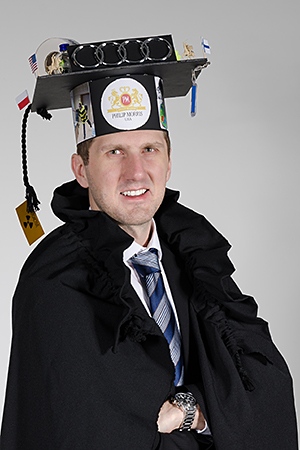Philipp Ritt
Automatic Classification of Cerebral Gliomas by Means of Quantitative Emission Tomography and Multimodal Imaging
Abstract
Cerebral gliomas represent a common type of cancer of the human brain with many tumor grades which express a huge diversity in growth characteristics and have a highly varying malignancy. The optimal treatment for a cerebral glioma is only ensured if the underlying tumor grade is known. One very common grading scheme is the World Health Organization (WHO) Classification of tumors of the central nervous system, which differentiates four grades. The de facto standard of grading a glioma is based on bioptic samples which are obtained in invasive interventions. These interventions pose significant risks for the patients and add more time delays between an initial evidence of the tumor, usually found by X-ray computed tomography (CT) or magnetic resonance imaging (MRI) and the initiation of a treatment. On the other side, versatile imaging modalities like CT, MRI and from the field of nuclear medicine, positron emission tomography (PET) cover various aspects of the morphology and physiology of a tumor. The information gained from medical imaging thus can indicate the grade of a cerebral glioma without any invasive intervention. The multimodal imaging often results in a high complexity that makes if difficult to diagnose the malignancy solely based on the visual interpretation of medical images. In this thesis, we present approaches for an extensive pattern recognition pipeline for the grading of cerebral gliomas based on tomographic datasets from MRI, CT, and PET. More specifically, we use gadolinium contrast-enhanced T1-weighted MRI, T2-weighted fluid attenuated inversion recovery MRI, diffusion-weighted MRI, non contrast-enhanced low-dose X-ray CT, and dynamic (multiple acquired time frames) [18F]-Fluor-Ethyl-Tyrosine (FET) PET. Our setup includes image preprocessing, feature extraction and calculation, feature normalization, and finally fully automatic classification. We propose the imaging modalities and the classifiers which performed best for our patient population and show that inter-dataset normalization as a preprocessing step helps to improve the classification rate for cerebral gliomas. As the PET is acquired over a lengthy time period which can lead to substantial patient motion, we present a retrospective motion correction technique based on image registration, which improves the image quality of the PET data. The presented approaches underline that diagnostic statements can be gained from highly complex, multimodal image data in an automated fashion. We can differentiate not only low- and high-grade tumors, but also aid in distinguishing between the four WHO grades within some limitations.
